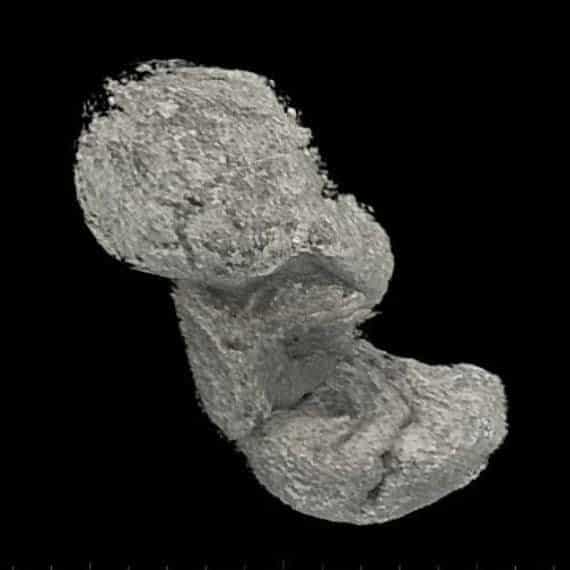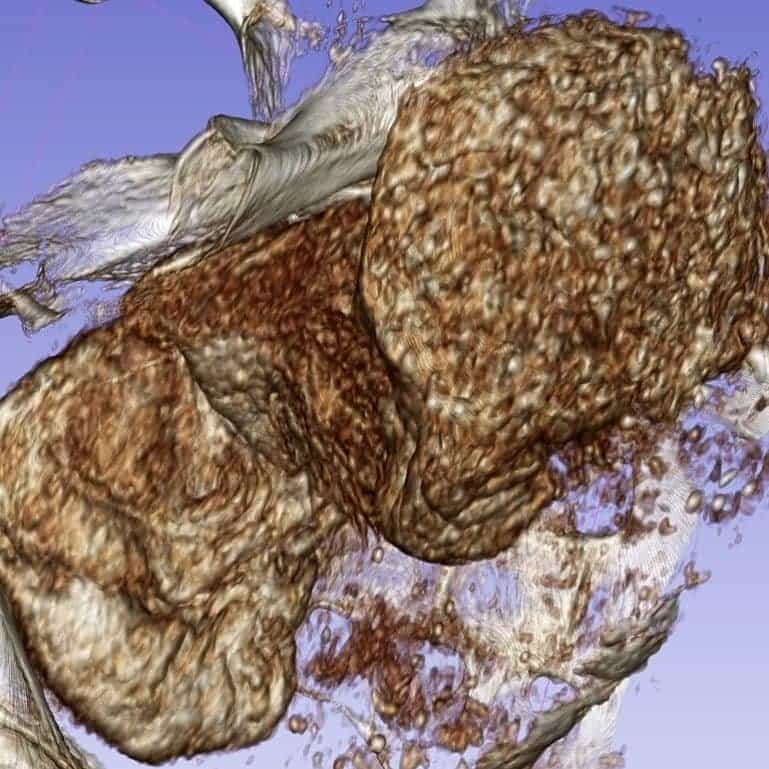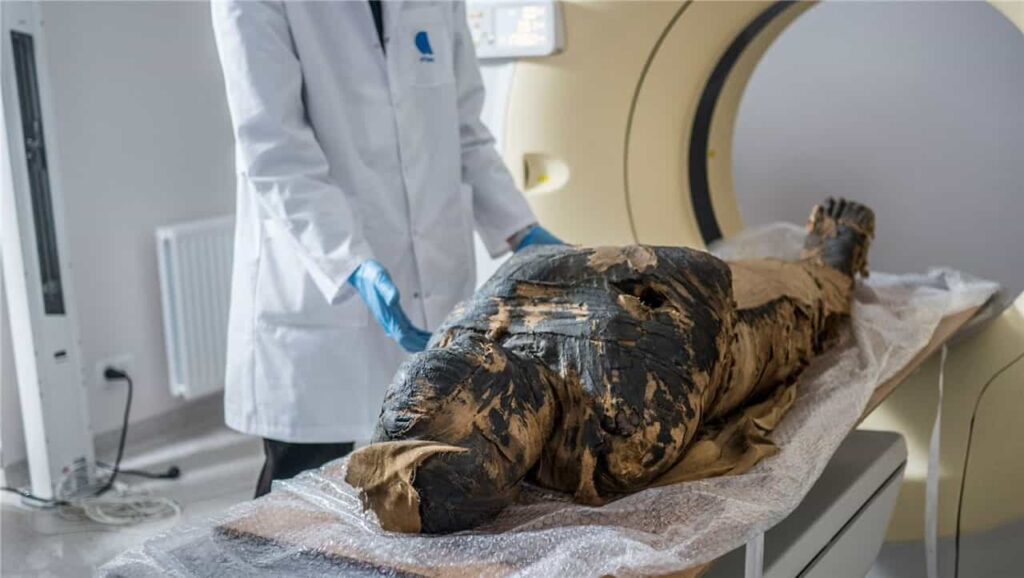Researchers from the Warsaw Mummy Project have studied the fetus of a woman’s mummy that is preserved in the collections of the National Museum in the Polish capital, and have discovered that due to the putrefaction process and after the mummification of this woman, the fetus began to “pickle” inside and then dry up, becoming a mummy within a mummy.
In April 2021, the Warsaw Mummy Project team, promoted by the Warsaw Academy of Sciences and whose objective is the study of ancient Egyptian mummies, published an article that revealed the first known case of a pregnant ancient Egyptian mummy.
Years ago it was thought that this mummy, which is kept in the National Museum in Warsaw, was that of a priest named Hor-Djehuty, until in 2016 it was discovered that it was actually a woman.
Baptized with the name of the Mysterious Lady due to its enigmatic origin, a more detailed examination of the mummy, with tomographic images, revealed that this woman, who lived in the 1st century BC, she was between 20 and 30 years old when she died and, most surprising of all, was in the 26th to 30th week of her pregnancy.
A mummy inside another mummy
In a new study that has been published in the Journal of Archaeological Science, the anthropologist Marzena Ozarek-Szilke and the archaeologist Wojciech Ejsmond Ożarek-Szilke, directors of the project, have explained that when the woman died, the fetus was still in the womb and, basically, began to “pickle” in an acidic environment.
Formic acid and other compounds (which are formed in the womb after death due to various chemical processes related to decomposition) changed the pH inside Lady Mysterious’s body producing that acidic environment.
Later, the putrefaction process stopped as a result of the woman’s mummification with natron, a sodium carbonate that dried her body and, consequently, the fetus she carried inside.
“The fetus became a mummy within a mummy. It is the first time that we have two different types of mummification in the same body,” said Ozarek-Szilke.
Thus, first the acidic environment caused the leaching (dissolution) of minerals in the fetus’s bones, which during the process of mummification of the woman began to dry out and mineralize.
The researchers say that, from a chemical point of view, the Egyptian mummification process is a process of mineralization of tissues, which can survive for millennia.
According to Ożarek-Szilke, “These two processes explain to us why the bones of the fetus are barely visible on CT scans. You can see, for example, the hands or a foot, but these are not bones, but dry tissues.
The skull, which develops faster and is the most mineralized, has been partially preserved”. In fact, the researchers explain that precisely it took them a while to detect the fetus inside the woman’s body because there was hardly any trace of bones.
A religious sense?
But several mysteries remain in the air. Are there more pregnant mummies in which the fetus could not be detected in other collections?
The researchers believe that it is very likely due to the difficulties involved in its identification. It is very likely that in other Egyptian mummies, the fetus “dissolved” and that is why the researchers have not been able to locate any.
“Given our findings, it is only a matter of time before the next mummified pregnant women are discovered,” says Ożarek-Szilke with conviction.
And as for the Mysterious Lady, why did the ancient embalmers leave the fetus inside her body? Ejsmond explains that the research team is working on two theories.
One of them suggests that perhaps, during the mummification process, it was simply decided not to extract it due to the difficulties involved in removing it without damaging the woman’s body.
The second hypothesis, more complex, is that behind it there is a hidden religious purpose linked to the beliefs of the ancient Egyptians about the survival of the soul of the deceased and the afterlife. A challenge for archaeologists and a very difficult mystery to solve.
Source: Carme Mayans, National Geographic



Read more: First Egyptian mummy of a pregnant woman is identified by researchers






